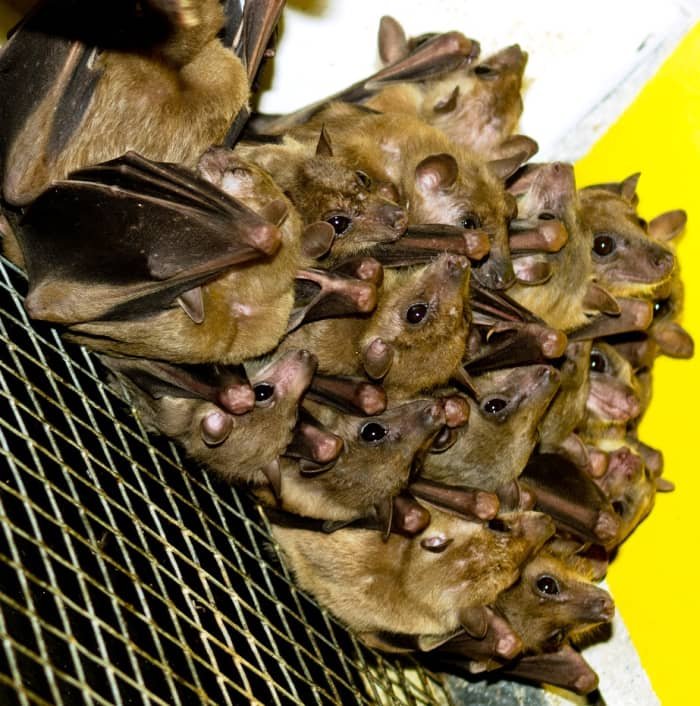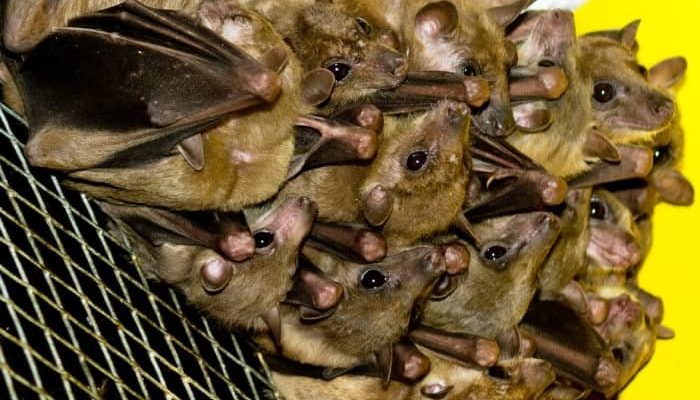
Let’s dive deeper into the habits of these nocturnal mammals. Whether you’re an animal lover or someone just curious about nature, understanding how bats care for their young can give you a whole new appreciation for them. Bats have some unique ways of raising their babies, and their parenting techniques are well-suited to their airborne lifestyles. So, grab a comfy seat and let’s explore the intriguing world of bat parenting!
Types of Bats and Their Parenting Styles
Bats are incredibly diverse, with over 1,400 species worldwide. But even within this wide variety, parenting styles can differ significantly. Some bats, like the Little Brown Bat, are known for their matriarchal society, where the females raise the pups together, while others, like the Vampire Bat, exhibit different social structures that influence how they care for their young.
The common thread among most bat species is their commitment to nurturing their young. For instance, female bats typically give birth to one pup per year, which is quite a commitment considering their smaller size. After the pups are born, mothers will fiercely protect them while teaching them essential skills, like flying and finding food.
Here’s the thing: bats rely heavily on each other. They often roost in large colonies, which not only provides safety from predators but also allows mothers to share the responsibility of nurturing. This communal approach can be quite effective. Imagine having a supportive circle of friends reminding you to keep an eye on your little one while you take a breather!
Pregnancy and Birth: A Bat’s Journey
When it comes to pregnancy, bats have a unique timeline. The gestation period for most species varies but can range from 40 days to several months. It’s important to note that many bats give birth in late spring or early summer when food sources, like insects, are plentiful. This timing ensures that the mother has enough resources to care for her pup.
During pregnancy, a female bat will often remain close to her roosting colony. This helps her stay safe while also ensuring that she has support from other female bats. When it’s time to give birth, she usually hangs upside down, which is typical behavior for bats, and can give birth quickly, often in a matter of seconds!
After the pup arrives, it’s not uncommon for mom to immediately latch on to her baby, feeding it milk for up to six weeks. The bond formed during this time is crucial and sets the foundation for the pup’s future independence.
Feeding and Care: A Bat Parent’s Role
Once a pup is born, the mother bat’s role intensifies. She must balance feeding herself while also providing for her young. This can be a bit of a juggling act! Female bats use echolocation to find food, and they often return to the roost with insects to feed their pups.
You might picture a mother bat returning with a meal in hand—well, sort of! She’ll regurgitate her food for her little one, which might sound a bit gross, but it’s super effective. The pups quickly learn to eat solid food and will eventually accompany their mothers on hunting trips. By teaching them to catch insects, the mothers ensure that their young are well-prepared for independent living.
In addition to physical care, maternal instincts kick in. Mothers groom their pups, keeping them clean and healthy. This nurturing not only strengthens their bond but also helps the pups feel secure and loved as they grow.
Social Structure and Learning Among Bats
One interesting aspect of bat parenting is the social learning that takes place within a colony. Pups learn by watching their mothers and other bats. This is similar to how human children learn by observing adults around them. Young bats observe hunting techniques, social interactions, and even how to navigate their environments.
As pups mature, they will often engage in play with other young bats. This play is not just fun; it helps develop their flying skills and social dynamics within the colony. You might think of it like a group of kids at a playground, learning the ropes of social interaction and physical coordination.
This social structure is critical for their survival. By growing up in a colony, bats develop lifelong bonds, which can be beneficial in times of danger. Should a predator appear, a large group of bats can disperse quickly, offering protection for all.
Challenges in Bat Parenting
Despite their excellent parenting skills, bat mothers face numerous challenges. Predators, environmental changes, and habitat loss can put pressure on bat populations. Natural threats, like hawks or snakes, can prey on young bats, especially during the vulnerable stages of their development.
Moreover, human activities have created significant obstacles. Deforestation and urbanization destroy roosting sites, leading to stress on bat populations. If a mother loses her roost, she may struggle to find a safe place to raise her young. This means it’s crucial for us to understand and protect their natural habitats, ensuring these fascinating mammals can continue their lives.
In addition, many bats are susceptible to diseases like White-nose syndrome, which has devastated populations across North America. The effects of such diseases can trickle down, affecting the entire colony, including how mothers care for their young.
Conservation Efforts for Bat Populations
Understanding bat parenting leads us to the importance of conservation. Numerous organizations are working to protect bat populations and their habitats. It’s essential to educate others about the vital role bats play in our ecosystem, like pest control and pollination.
You can help too! Here are some ways to contribute to bat conservation efforts:
- Educate yourself and others about the importance of bats.
- Support local conservation groups focused on protecting bat habitats.
- Install bat houses in your yard to provide safe roosting sites.
- Advocate for policies that protect natural areas where bats roost and feed.
By taking these steps, we can help ensure that future generations of bats can continue their fascinating lives and raise their young safely.
Final Thoughts
Bats are far more than just creatures of the night. They are dedicated parents that invest significant time and energy into raising their young, often in collaborative ways that highlight their social nature. From birth to independence, bat parenting is an extraordinary journey shaped by instinct, environment, and community support.
Next time you hear the flapping of wings overhead during twilight, remember the tiny families forming in the shadows. By learning about how bats raise their young in the wild, you not only gain insight into their lives but also understand the broader importance of preserving their habitats. Let’s appreciate these unique animals and do our part to protect them for generations to come!

